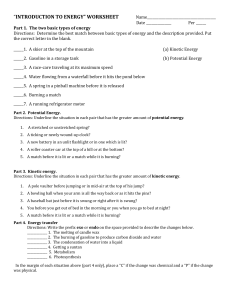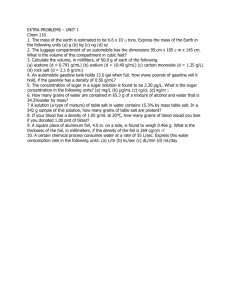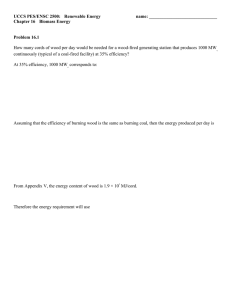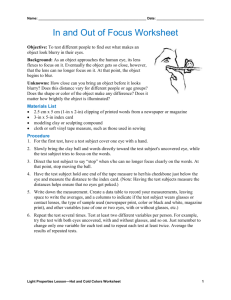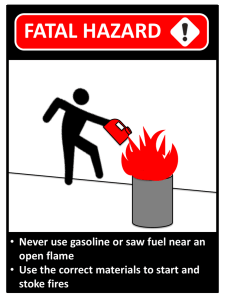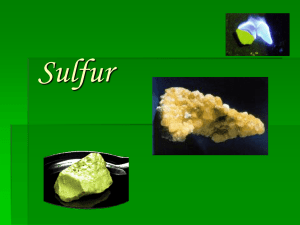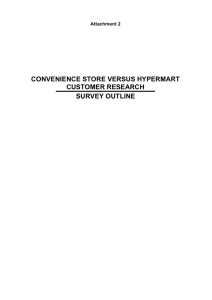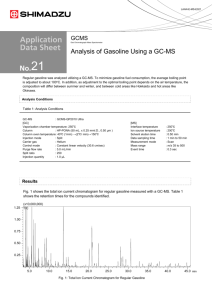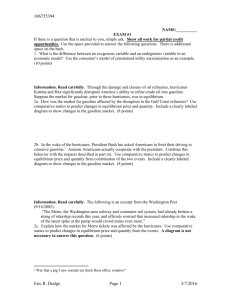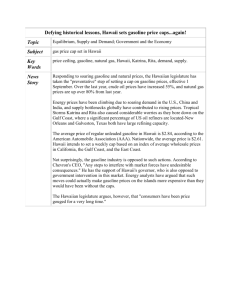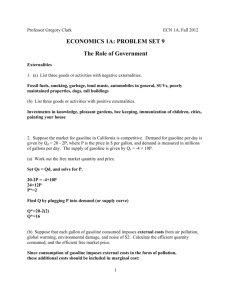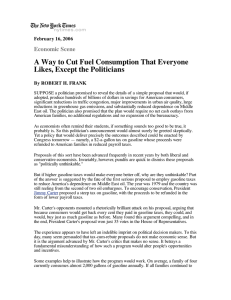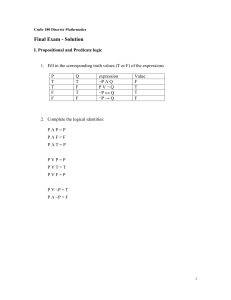Properties of Matter Exercises
advertisement
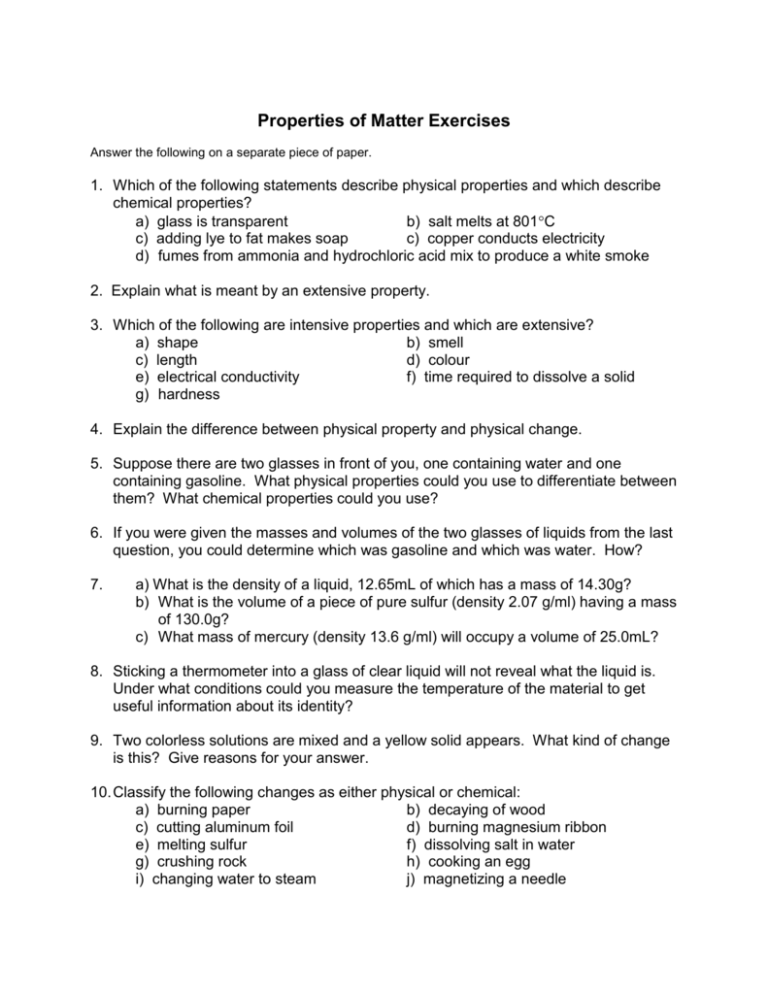
Properties of Matter Exercises Answer the following on a separate piece of paper. 1. Which of the following statements describe physical properties and which describe chemical properties? a) glass is transparent b) salt melts at 801C c) adding lye to fat makes soap c) copper conducts electricity d) fumes from ammonia and hydrochloric acid mix to produce a white smoke 2. Explain what is meant by an extensive property. 3. Which of the following are intensive properties and which are extensive? a) shape b) smell c) length d) colour e) electrical conductivity f) time required to dissolve a solid g) hardness 4. Explain the difference between physical property and physical change. 5. Suppose there are two glasses in front of you, one containing water and one containing gasoline. What physical properties could you use to differentiate between them? What chemical properties could you use? 6. If you were given the masses and volumes of the two glasses of liquids from the last question, you could determine which was gasoline and which was water. How? 7. a) What is the density of a liquid, 12.65mL of which has a mass of 14.30g? b) What is the volume of a piece of pure sulfur (density 2.07 g/ml) having a mass of 130.0g? c) What mass of mercury (density 13.6 g/ml) will occupy a volume of 25.0mL? 8. Sticking a thermometer into a glass of clear liquid will not reveal what the liquid is. Under what conditions could you measure the temperature of the material to get useful information about its identity? 9. Two colorless solutions are mixed and a yellow solid appears. What kind of change is this? Give reasons for your answer. 10. Classify the following changes as either physical or chemical: a) burning paper b) decaying of wood c) cutting aluminum foil d) burning magnesium ribbon e) melting sulfur f) dissolving salt in water g) crushing rock h) cooking an egg i) changing water to steam j) magnetizing a needle

